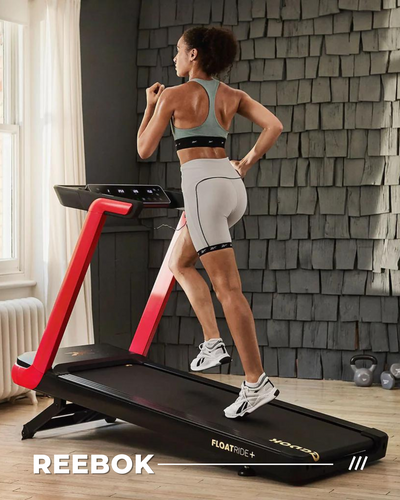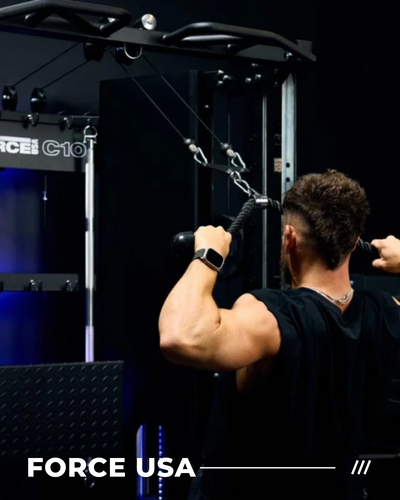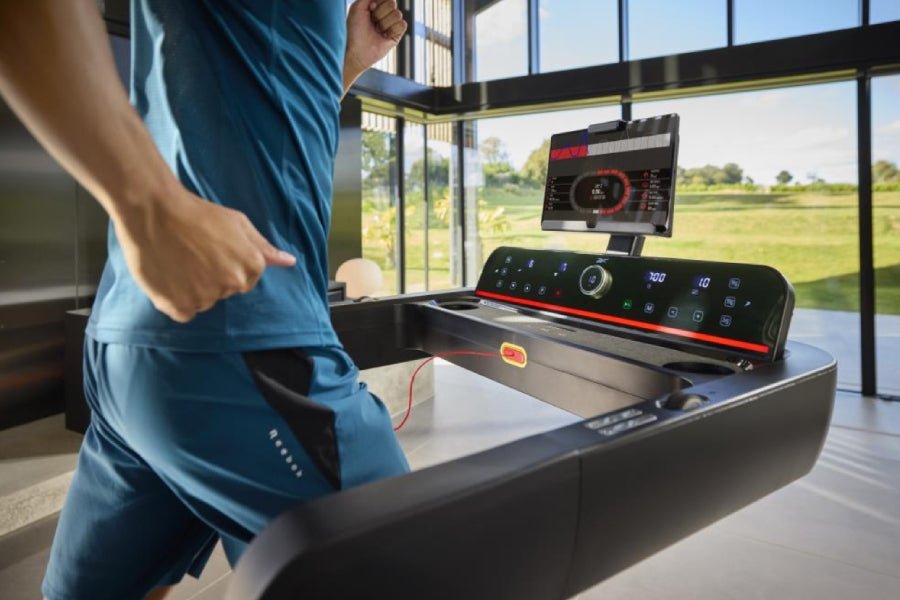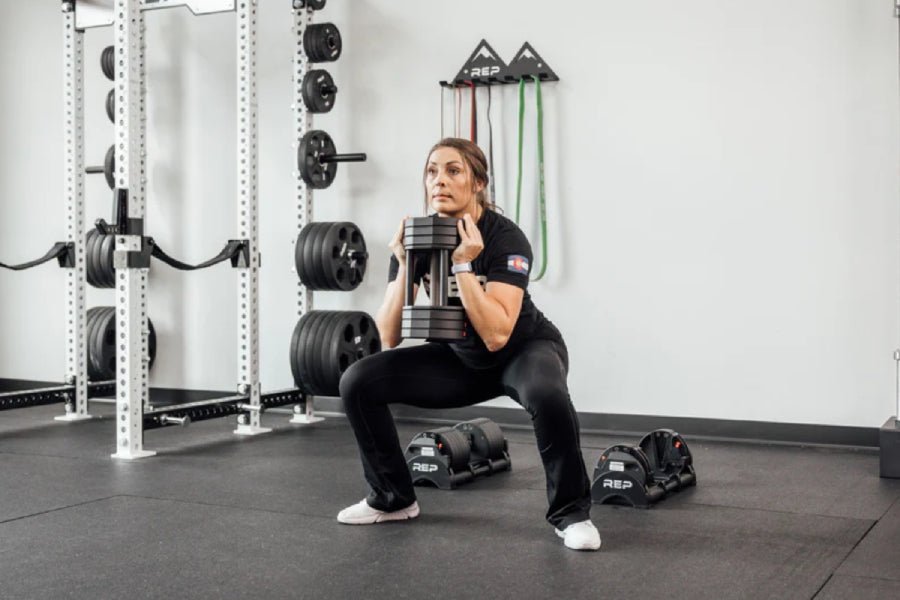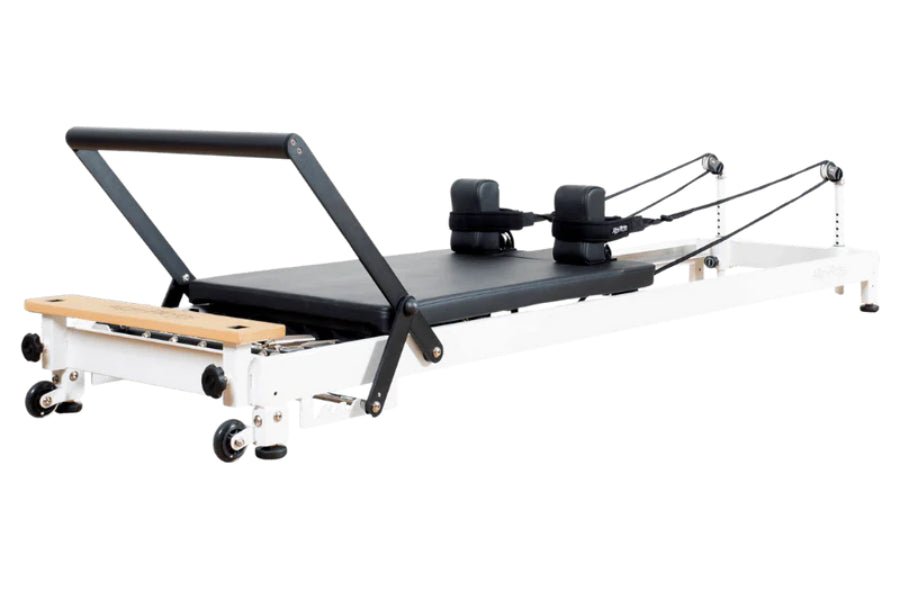Why Your Legs Need More Than Just Squats And Lunges
GYMSPORTZ PTE LTD | 26 Aug 2025

When it comes to building strong, toned legs, squats and lunges often dominate workout routines. These exercises are incredibly effective at targeting major muscles in the lower body, particularly the quadriceps and glutes. However, relying solely on these movements can limit overall leg development and lead to muscular imbalances over time. To build truly powerful and well-rounded legs, it’s essential to include a variety of exercises that target all the major muscle groups, improve stability, and enhance performance.
Understanding Leg Anatomy
The legs are comprised of several key muscle groups, each responsible for specific movements:
• Quadriceps: Located at the front of the thigh, responsible for knee extension and important for movements like running, jumping, and climbing stairs.
• Hamstrings: Found at the back of the thigh, responsible for knee flexion and hip extension. Strong hamstrings help maintain balance and protect the knees from injury.
• Glutes: Comprising the gluteus maximus, medius, and minimus, these muscles are crucial for hip extension, abduction, and rotation. Well-developed glutes improve posture, athletic performance, and overall leg power.
• Calves: Including the gastrocnemius and soleus muscles, responsible for plantar flexion of the ankle. Strong calves contribute to running efficiency and overall lower-leg stability.
Squats and lunges primarily target the quadriceps and glutes, with secondary engagement of the hamstrings and calves. While these exercises are excellent for building foundational strength and size, they do not fully activate all leg muscles in every plane of movement. Without incorporating additional exercises, some areas of your legs may remain underdeveloped, limiting functional strength and increasing the risk of injury.
The Importance of Variety in Leg Workouts
Performing a diverse range of leg exercises ensures balanced muscle development. A comprehensive leg workout should engage all major muscle groups through different movement patterns. This approach not only promotes strength and symmetry but also reduces the risk of overuse injuries that can arise from performing the same movements repeatedly.
Variety also makes training more interesting and challenging. Focusing exclusively on squats and lunges can lead to boredom and plateauing, whereas introducing different exercises keeps the muscles guessing and encourages continuous improvement. By targeting muscles from multiple angles, you can achieve better definition, strength, and endurance in your lower body.
Incorporating Dumbbell Exercises
Using dumbbells in your leg workouts can significantly enhance muscle engagement and range of motion. Dumbbells allow for greater freedom of movement compared with machines and can challenge your balance and stability.
Some effective dumbbell exercises include:
• Dumbbell Romanian deadlift: Targets the hamstrings and glutes while improving hip mobility and core stability.
• Dumbbell goblet squat: Adds resistance to the squat, engaging the quads, glutes, and core.
• Dumbbell step-ups: Work the glutes, hamstrings, and calves while also improving balance and unilateral strength.
Incorporating leg exercises with dumbbells into your routine is a simple yet highly effective way to ensure that your entire lower body is trained, rather than focusing solely on the muscles primarily used in squats and lunges. This can lead to better overall performance and reduce the risk of muscular imbalances.
Exploring Alternative Movements
To fully develop your legs, it’s important to explore exercises beyond traditional squats and lunges. Here are some alternatives that target different muscle groups:
• Bulgarian split squats: Emphasise unilateral strength and target the glutes, quads, and hamstrings more intensely than regular squats.
• Glute bridges or hip thrusts: Focus on glute development while also activating hamstrings and lower back stabilisers.
• Calf raises: Strengthen the calves, improve ankle stability, and enhance explosive movements such as jumping or sprinting.
• Side lunges: Work the inner thighs, glutes, and stabilising muscles, promoting lateral strength and flexibility.
Incorporating these exercises ensures that all leg muscles are effectively targeted and strengthens areas that are often neglected in traditional workouts. This not only improves aesthetics but also enhances functionality for sports, daily activities, and overall athletic performance.
The Role of Cardiovascular Training
Leg workouts are not solely about resistance training. Cardiovascular exercises are essential for developing endurance and promoting overall lower-body fitness. Activities like running, cycling, and rowing improve cardiovascular capacity while also strengthening the legs.
A compact treadmill can be a useful addition to your home or gym setup. It allows you to perform controlled running or walking workouts regardless of the weather and provides an efficient way to build leg endurance alongside resistance training. Combining cardiovascular activity with a diverse strength routine ensures that both muscular and cardiovascular systems are optimally developed.
Benefits of a Comprehensive Leg Routine
Adopting a well-rounded leg workout offers several important benefits:
• Balanced Muscle Development: Ensures that all leg muscles are equally trained, reducing the risk of muscular imbalances.
• Improved Athletic Performance: Strong and well-conditioned legs enhance speed, power, agility, and overall performance in sports and daily activities.
• Injury Prevention: Incorporating a variety of movements strengthens stabilising muscles and reduces overuse injuries, particularly in the knees and lower back.
• Functional Strength: A comprehensive routine improves the ability to perform everyday tasks such as climbing stairs, lifting objects, and maintaining balance.
• Aesthetic Benefits: Balanced development leads to toned and proportionate legs, enhancing overall appearance.
By embracing variety in your leg workouts, you create a foundation for both strength and longevity. Strong legs not only support daily activities but also protect your joints and spine, contributing to long-term health and mobility.
Structuring a Balanced Leg Workout
A well-rounded leg routine should combine compound movements, isolation exercises, and cardiovascular training. A sample structure could look like this:
1. Warm-up: 5–10 minutes of light cardio or dynamic stretching to prepare muscles and joints.
2. Compound exercises: Squats, lunges, Bulgarian split squats, or leg presses to target multiple muscle groups simultaneously.
3. Dumbbell exercises: Romanian deadlifts, goblet squats, or step-ups to enhance resistance and improve unilateral strength.
4. Isolation exercises: Calf raises, glute bridges, or hamstring curls to specifically target smaller muscle groups.
5. Cardio finisher: 10–20 minutes on a compact treadmill or cycling to build endurance and promote overall fitness.
6. Cool-down and stretching: Prevent stiffness, enhance recovery, and maintain flexibility.
Rotating exercises regularly, increasing resistance gradually, and incorporating unilateral movements ensures that your legs continue to develop in strength, size, and functionality.
Conclusion
Squats and lunges are essential exercises for any leg workout, but they should not be the only movements in your routine. To achieve balanced muscle development, prevent injuries, and improve overall performance, it is crucial to incorporate a variety of exercises that target all major muscle groups. Using leg exercises with dumbbells and integrating a compact treadmill for cardio can enhance your lower-body training and provide a more complete workout.
At Gymsportz, we provide the equipment, resources, and guidance to help you design a comprehensive leg routine that goes beyond traditional exercises. By diversifying your workouts and challenging your muscles in multiple ways, you can achieve stronger, more functional, and aesthetically balanced legs, supporting both fitness goals and everyday activities.

